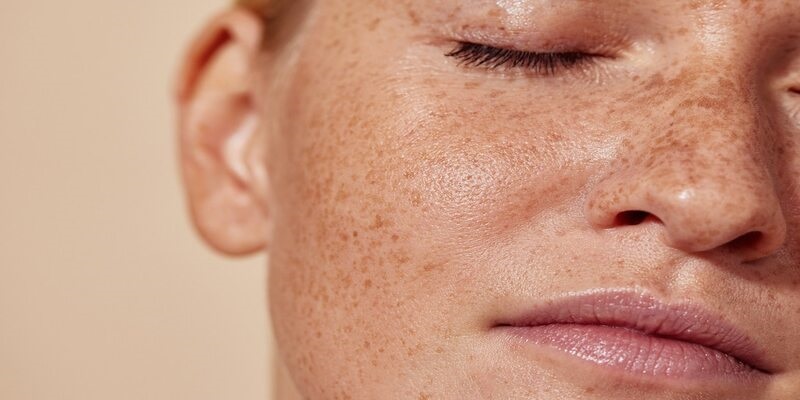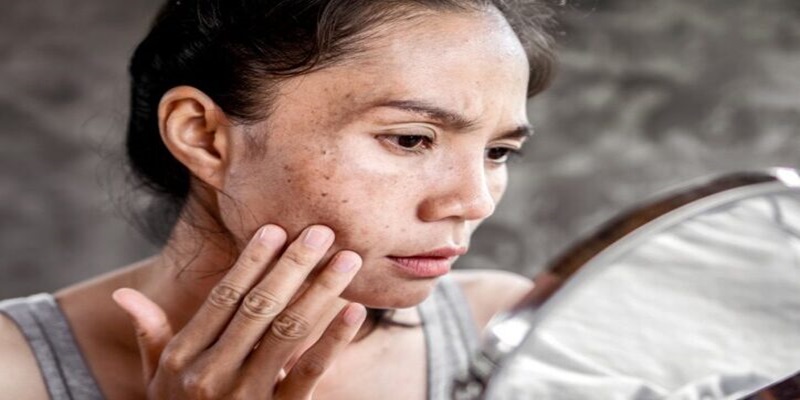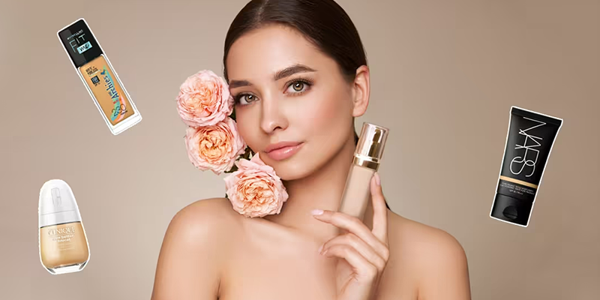Beauty
How To Get Rid Of Sunspots And Hyperpigmentation
Sunspots and hyperpigmentation are two prevalent skin issues that can notably influence overall skin health and appearance. Sunspots, also known as solar lentigines or age spots, are small, darkened patches that emerge on the skin primarily due to prolonged exposure to the sun's ultraviolet (UV) rays. These spots typically manifest in sun-exposed areas such as the face, hands, and shoulders. Conversely, hyperpigmentation describes an overproduction of melanin, the pigment responsible for skin colour, resulting in dark patches that can occur anywhere on the body. Various agents, including hormonal changes, inflammation, or environmental stressors alongside UV exposure, can trigger this condition.
Sunspots and hyperpigmentation are two prevalent skin issues that can notably influence overall skin health and appearance. Sunspots, also known as solar lentigines or age spots, are small, darkened patches that emerge on the skin primarily due to prolonged exposure to the sun's ultraviolet (UV) rays. These spots typically manifest in sun-exposed areas such as the face, hands, and shoulders. Conversely, hyperpigmentation describes an overproduction of melanin, the pigment responsible for skin colour, resulting in dark patches that can occur anywhere on the body. Various agents, including hormonal changes, inflammation, or environmental stressors alongside UV exposure, can trigger this condition.

Sunspots and hyperpigmentation can negatively impact skin health, leading to aesthetic concerns and feelings of self-consciousness. Individuals affected by these conditions might experience a decline in confidence and overall satisfaction with their appearance. Addressing these skin imperfections becomes essential not just for enhancing aesthetic appeal but also for promoting healthier skin. Achieving clear skin can contribute to a more youthful and vibrant look, which many people desire.
This in-depth guide will explore practical techniques and products for combating sunspots and hyperpigmentation. From uncovering the underlying causes to examining treatment options and prevention strategies, we aim to provide valuable insights that will guide you along your journey to attaining flawless skin.
Understanding Sunspots And Hyperpigmentation
What Are Sunspots?
Sunspots, known scientifically as solar lentigines or age spots, are small, darkened patches that commonly form on the skin, predominantly in areas exposed to sunlight, such as the face, hands, and shoulders. The primary cause of these spots is prolonged exposure to UV radiation, which accelerates the skin's melanin production, the pigment responsible for skin colour. As individuals age, their skin's regenerative ability decreases, making older skin more vulnerable to developing sunspots. Visually, sunspots generally appear brown, grey, or black and vary in size and shape. They often resemble freckles but are more conspicuous and layered, particularly on sun-damaged skin.
What Is Hyperpigmentation?
The darkening of skin areas characterizes hyperpigmentation due to excess melanin production. This can manifest as various forms of skin discolouration, ranging from brown to black spots. There are several types of hyperpigmentation, including melasma and post-inflammatory hyperpigmentation. Melasma typically presents as brown patches and is frequently triggered by hormonal fluctuations, such as those occurring during pregnancy or while taking contraceptive pills. Alternatively, post-inflammatory hyperpigmentation arises following skin injuries, like acne or eczema, leading to dark spots in areas where inflammation occurred. Both forms can worsen with sun exposure, which heightens pigmentation.
Key Differences Between Sunspots And Hyperpigmentation
Though both sunspots and hyperpigmentation involve increased melanin production, they differ significantly concerning their causes and presentation. Sunspots primarily arise from UV exposure and are often associated with ageing skin, presenting as well-defined spots in sun-exposed areas. In contrast, hyperpigmentation encompasses a broader range of conditions resulting from diverse triggers, such as hormonal changes or skin trauma. Hyperpigmentation can surface anywhere on the body and might not directly relate to sun exposure. Recognizing these distinctions is critical for implementing effective treatment and prevention strategies, especially for individuals aiming to maintain clear, healthy skin.
Effective Treatment Options
Effective treatment for sunspots and hyperpigmentation necessitates a comprehensive approach that includes topical treatments, professional procedures, and natural remedies. Each method varies in effectiveness, safety, and accessibility, allowing individuals to tailor their skincare regimen to meet their needs best.
Topical Treatments
Topical treatments often serve as the initial defence against sunspots and hyperpigmentation. These products can be categorized into over-the-counter (OTC) options and prescription treatments.
Over-The-Counter Products
OTC treatments typically feature active ingredients that lighten the skin and promote an even complexion. Vitamin C is a well-known contender, celebrated for its antioxidant properties that can curb melanin production and amplify skin radiance. Another prevalent ingredient is hydroquinone, a renowned skin-lightening agent that inhibits an enzyme crucial to melanin production. Despite its efficacy, hydroquinone should be cautiously utilized, as it can cause skin irritation for some individuals.
Prescription Treatments
When pigmentation proves more resilient, dermatologists may suggest tretinoin, a prescription-strength retinoid. Tretinoin enhances cell turnover, assisting in fading hyperpigmented areas while refining overall skin texture. However, users may experience redness and peeling, particularly during the early treatment phase. Using these products under professional supervision is essential to reduce side effects and enhance effectiveness.
Professional Treatments
Professional interventions may become necessary when topical treatments fail to deliver desired results. These treatments generally yield faster and more substantial outcomes.
Chemical Peels
Chemical peels entail the application of compounds that exfoliate the top layers of skin to expose fresher, less pigmented skin beneath. This procedure can be tailored to accommodate varying pigmentation levels and skin types, offering a personalized approach. Patients can anticipate some redness and peeling following treatment; however, results usually improve over several weeks.
Laser Therapy
Laser therapy is another cutting-edge treatment that employs concentrated light to target and disintegrate pigmented cells. This approach can yield impressive effectiveness, delivering significant results with minimal recovery time. Nevertheless, potential side effects may include temporary swelling or changes in skin texture. Consulting a qualified dermatologist is paramount to assess individual suitability for this treatment option.
Microdermabrasion
Microdermabrasion is a non-invasive technique that gently exfoliates the skin's surface. Removing dead skin cells gradually helps reduce the visibility of sunspots. While this method is generally safe and entails little downtime, results may be subtle, and multiple sessions are often recommended to achieve optimal outcomes.
Natural Remedies
Individuals seeking holistic alternatives may try various natural remedies to mitigate hyperpigmentation, although their effectiveness can differ.
Home Remedies
Aloe vera is celebrated for its soothing properties and practical support for skin healing. The compounds found in aloe vera may aid in lightening pigmentation over time. Lemon juice, often touted as a natural highlighter, features citric acid, which can exfoliate and brighten skin. However, its acidic nature may irritate sensitive skin and prompt increased sun sensitivity, necessitating cautious application.
Pros And Cons
Natural remedies are appealing due to their accessibility and mild nature, but they typically demand prolonged treatment periods and may not equate to clinical options in efficacy. Moreover, improper application could worsen skin concerns. Thus, conducting a patch test and consulting with a dermatologist before adopting such remedies into a skincare routine is advisable.
In summary, effective treatment options for sunspots and hyperpigmentation extend from topical treatments to professional methods and natural alternatives. Grasping the advantages and disadvantages of each technique is crucial for acquiring healthier, clearer skin.
Prevention Tips
Preventing new sunspots and hyperpigmentation can be achieved through a thoughtful blend of lifestyle changes and protective practices. Below are vital recommendations to help you attain radiant and evenly toned skin.
1. Importance Of Daily Sunscreen Use
Daily sunscreen is one of the most pivotal measures in thwarting further sun damage. Regardless of weather conditions, UV rays can infiltrate clouds and still harm your skin. Select a broad-spectrum sunscreen with a minimum SPF of 30 and generously apply it every morning. This practice not only guards against sunburn but also obstructs new sunspots and hyperpigmentation formation. It's essential to reapply every two hours, especially if you are sweating or swimming. Remember, persistent daily use cultivates a protective barrier that considerably reduces the risk of additional skin discolouration.
2. Protective Clothing
Alongside sunscreen, incorporating protective clothing offers additional defence against UV exposure. Long-sleeved attire, wide-brimmed hats, and UV-protective sunglasses can shield your skin from harmful rays. Fabrics rated with UPF (Ultraviolet Protection Factor) provide enhanced coverage, making them ideal for outdoor ventures. When choosing clothes, consider light-coloured, loose-fitting garments, which minimize direct exposure and help keep your skin cool, reducing the chance of overheating.
3. Establishing a Regular Skincare Routine
Maintaining a consistent skincare routine tailored to your skin type is critical for preserving even skin tone. This should include cleansing, exfoliating, and moisturizing while integrating products infused with vitamin C, niacinamide, and retinoids, promoting clarity and brightness. Regular exfoliation aids in removing dead skin cells, facilitating the emergence of fresh cells, which can contribute to skin tone evenness over time. Nightly treatments targeting hyperpigmentation offer a unique opportunity for skin renewal during sleep.
4. Influence Of Nutrition And Hydration
The roles of nutrition and hydration in skin health cannot be underestimated. A diet rich in antioxidants—found in fruits, vegetables, nuts, and seeds—supplies essential nutrients for skin repair and maintenance. Foods abundant in omega-3 fatty acids, such as salmon and nuts, support skin barrier function. Equally important, staying adequately hydrated by drinking ample water nourishes the skin from within, enhancing its elasticity and clarity. Proper hydration is key in flushing toxins, which may minimize sunspots' appearance while helping nurture an overall healthy complexion.
Incorporating these prevention strategies into your daily routine can significantly mitigate the risk of developing sunspots and hyperpigmentation, guiding you towards clearer and healthier skin.
Recommended Products And Treatments
For those looking to reduce sunspots and hyperpigmentation, several dermatologist-recommended products and professional treatments are worth considering. Below is a succinct list of practical options:
1. CeraVe Skin Renewing Vitamin C Serum This serum contains 10% pure Vitamin C, brightening skin and enhancing texture. Ceramides bolster the skin barrier, making it particularly beneficial for sensitive complexions.
2. Neutrogena Rapid Tone Repair Dark Spot Corrector: Enriched with retinol, this lightweight cream targets hyperpigmentation, noticeably diminishing dark spots in as little as one week due to its rapid-acting formula.
3. Paula's Choice 10% Niacinamide Booster Renowned for its calming properties, niacinamide effectively reduces redness and improves skin tone. This booster notably minimizes the appearance of pores while addressing sunspots and uneven pigmentation.
4. Murad Rapid Dark Spot Correcting Serum: This powerhouse serum boasts a potent blend of hydroquinone and glycolic acid, which not only fades existing sunspots but also helps prevent new formations. Thus, it offers a comprehensive approach to treating hyperpigmentation.
5. SkinCeuticals C E Ferulic Esteemed for its antioxidant protection, this serum brightens the complexion while guarding against environmental damage. It aids in reducing discolouration, resulting in a more youthful glow.

Overview Of Effective Professional Services
Beyond at-home treatments, several professional services have gained favour among users for their efficacy:
Laser Therapy: Intense Pulsed Light (IPL) can significantly diminish sunspots and enhance skin texture through targeted light energy.
Chemical Peels: These treatments utilize acids to exfoliate the skin, promote new cell growth, and mitigate hyperpigmentation.
Microdermabrasion: This non-invasive process exfoliates the outer skin layer, reducing dark spots and refreshing the skin's appearance.
Integrating these products and services can be a strategic approach to achieving a more transparent, uniform complexion.
Embrace Your Journey To Flawless Skin
Confronting sunspots and hyperpigmentation transcends mere cosmetic concerns; it is integral to maintaining optimal skin health. In this guide, we have addressed the root causes of these skin conditions, outlined effective treatment options, and shared practical preventive measures. From topical solutions teeming with antioxidants to professional treatments like laser therapies, your pathway to clearer skin is within reach. Moreover, the importance of sun protection and utilizing protective clothing cannot be overstated, as these elements are crucial in preventing further skin damage.
We urge you to take action now. Invest in high-quality skincare products and implement protective practices in your daily routine. The lasting advantages of healthier skin include enhanced appearance and augmented confidence and self-esteem. Always remember that your skin reflects your overall health; thus, investing in its care is a commitment that brings substantial rewards over time. Don't wait for sunspots to reveal themselves—embark on your journey to luminous, flawless skin today!



